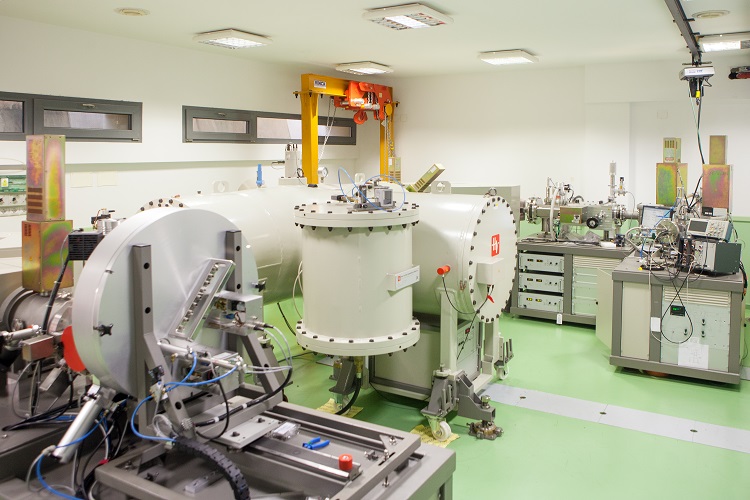Accelerator 1MV Mass Spectrometer
The AMS Unit of the Centro Nacional de Aceleradores was created in September 2005 right before the arrival of the Accelerator Mass Spectrometry (AMS) system acquired the Dutch company High Voltage Engineering Europe. Thus becomes the only facility of AMS in Spain.
Â

Â
Accelerator Mass Spectrometry is a nuclear technique for the detection of radionuclides which are in very small amounts in nature. In particular, it is applied to those isotopes which are very difficult to detect using radiometric techniques because they have a very long half-life. AMS does not detect radiation emitted by these isotopes, but the signal they produced in a nuclear detector after being selected by electric and magnetic fields.
Â
The presence of a tandem particle accelerator can significantly increase the energy of the ions to values in the order of MeV/uma. This can be used to discriminate them from other isotopes by their nuclear properties. In addition, the accelerator stripper breaks the molecules of the same mass as the isotope of interest, which further reduces interference. These issues make AMS more sensitive than any other radionuclide detection technique, which makes it effective in many scientific problems cannot be met otherwise.
Â
Nuclei detected by AMS are varied. The facility at CNA, based on a 1 MV Tandem Accelerator, was originally designed for the measurement of 10Be, 14C, 26Al, 129I and isotopes of Pu. In the last years, active lines have focused on the analysis of samples for 14C,26Al, 129I and Pu isotopes, but tests to study the team's ability to detect new radioisotopes as the 41Ca and 36Cl have begun.
Â
Â



 Â
  Â
 


